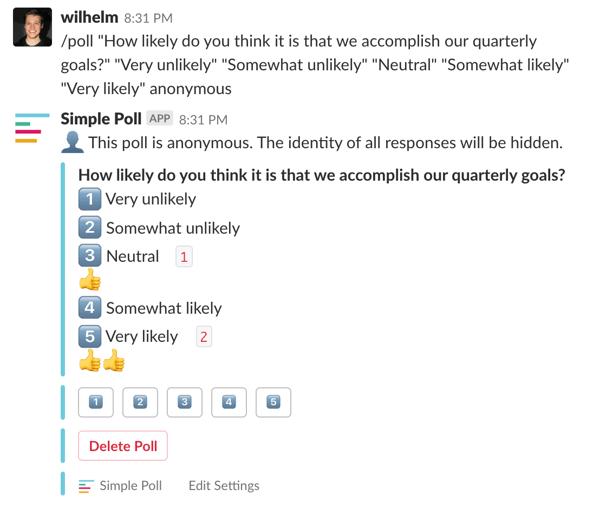The Best Virtual Communication Tools for Business
Every great organization needs three things. First, they need trust. Without trust, teams struggle to work collaboratively. Next, they need ...
In a perfect world, your distributed team is extremely productive. They have exceptional creative output. Projects are delivered on-time and under budget. They're happy and motivated to sign-on to work every morning.
However, a lot of remote teams fall short of those goals. On a day-to-day basis, there's a lot of remote friction that can be difficult to solve. If you think about how you spend a majority of your day as a remote worker, you can relate to these challenges.
It take hours to get a response from a team member working in a different time zone.
The context or update you're looking for gets lost in tools like Microsoft Teams and Slack.
You're working on a deliverable, only to realize there's been a shift in strategy.
For many companies, these types of miscommunication and challenges with collaboration are just the nature of remote work. Since these problems are such collaboration killers, a lot of decision makers adopt virtual collaboration platforms and technology to bridge the gaps.
While a lot of these platforms promise to get your team in sync, many fall short. In reality, there are only a few platforms that can help your team achieve the type of mastery your remote team needs to be wildly successful. In our experience, these platforms typically share a few traits that make them such a game-changer for your company.
Before we discuss how the right virtual collaboration platform will improve how your team works, it's important to understand one thing. If you want the best results from a virtual collaboration platform, you need to do more than implement new technology. You need to assess what's broken within your processes and systems.
While technology certainly helps, the key to overcoming most remote team challenges is understanding where your team is falling short. Then, after you identify the areas that need the most improvement, you can set goals to move you in the right direction. You need to know what's broken in order to fix it.
With this in mind, you can choose the right platform that will actually get your team back on track.

First, let's discuss the struggles that come with working remotely. Since a lot of teams experience common types of friction, it's easy to identify and address these challenges.
With remote teams, it’s not uncommon for there to be too much conversation or not enough. For instance, a lot of teams experience messaging fatigue, which comes from an abundance of conversation occurring on multiple platforms. Aside from adopting a better communication tool, such as Slack or Twist, a good solution is implementing best practices for messaging.
These guidelines can include stricter formatting for updates or a mandatory two-hour response period.
Without the right technology or system in place, platforms quickly become disorganized. There are a few ways to solve for this. First, you can invest in separate tools for task management and communication. For example, Monday.com can be used for tasks while Microsoft Teams can be your primary communication tool.
You should also designate a team member or hire an operations manager to monitor these platforms. This team member can call out any incorrect uses of the platform and keep everything organized.
When platforms don’t work well together, projects don’t move as quickly. It's difficult for teams to work collaboratively when one has to scour multiple tools for analytics or feedback. A good solution for disconnected tools is implementing a better technology stack with platforms that can easily connect.
A great example of an integrated tool is HubSpot. HubSpot provides sales and marketing features that link to the same CRM, which makes it easy for everyone on your team to work from the same data. Every platform you use should also have a few specific goals, tied directly to a company objective.
If your team doesn’t have a healthy work and life balance, it won’t matter what kind of technology you use. Working too many hours will impact your company culture and burn out your employees. You can address work-life balance by giving employees more time off, a clear start-and-finish to their workday, and plenty of breaks.

You can also implement integrations with Slack and Microsoft Teams to measure your team's mojo. A few notable examples include tools like Simple Poll, which you can use to collect feedback and ideas from employees.
It’s difficult to build a relationship with a distributed team. Unless you have frequent meet-ups, employees don't have the best opportunities to connect with each other. A lot of teams solve this by prioritizing creating a better company culture. With better communication tools and team building activities, team members can build trust and get to know one another.
Teams can host virtual get to know you sessions, host remote team lunches, or hold weekly alignment sessions to keep everyone motivated and energized.

There are a lot of virtual collaboration platforms out there. Some are better than others, and in our experience, make remote collaboration smoother. Here are some of our favorite platforms and the purpose they serve.
With the right system in place, any of these tools can be a game-changer for your team.
Even after you adapt some of these virtual collaboration tools, there will be problems that still exist. The current technology that a lot of remote teams invest in helps with day-to-day collaboration and communication, but can’t resolve every aspect of remote work friction.
You can't fix physical barriers with any existing communication tool, period. There isn't a substitute for sitting next to someone or having a face-to-face conversation. While video conferencing apps improve the experience, it’s not the same.
Even with tools like Zoom and Slack, you're going to have shallow conversations with your team. You’re essentially having a long-distance relationship with your co-workers, and communicating with each other one line at a time.
A lot of remote teams can relate to this. On any given day, you get a ton of emails, constantly pinged on Slack, and need to hop on numerous Zoom calls. And unless you can stop relying on these separate platforms for all of your communication, messaging fatigue will continue.
A better project management system may organize your projects and tasks, but it's still likely that things will fall through the cracks. When you're working remotely, you can't overhear a co-worker incorrectly describe the goal of a project, and have the chance to correct them. It's just difficult to have a fluid conversation over a messaging app. There will always be a disconnection.
Overall, there isn't a virtual HQ tool (not even Slack) that can act as a proper headquarters for your team.
While some problems may cease, overall, there is not a tool or combination of tools that completely solves remote friction. However, in the mean time, you can also work on maximizing team morale to make your remote team happier and more productive.
Related Article:

Every great organization needs three things. First, they need trust. Without trust, teams struggle to work collaboratively. Next, they need ...
Subscribe now to be first to know what we're working on next.
By subscribing, you agree to the High Fidelity Terms of Service